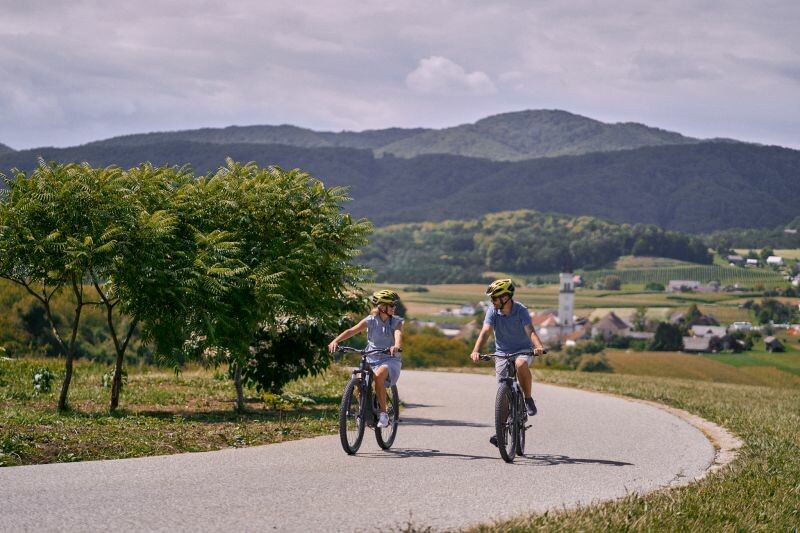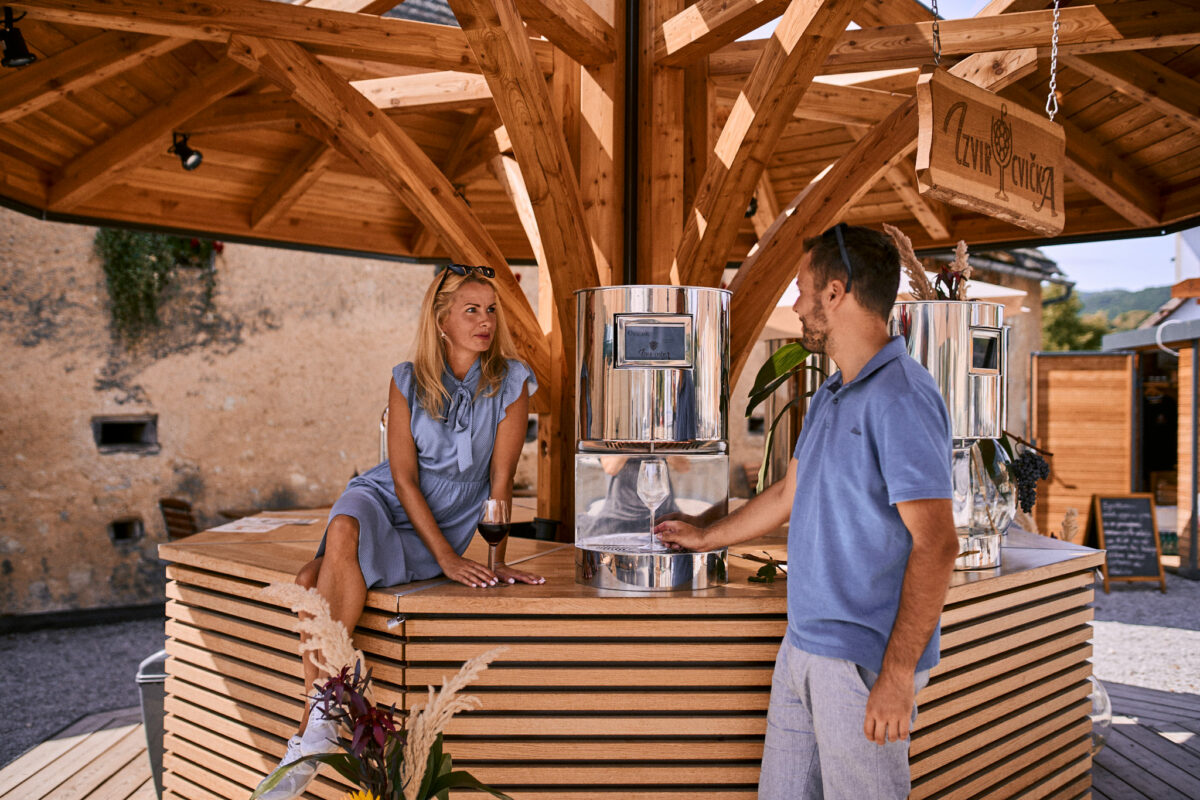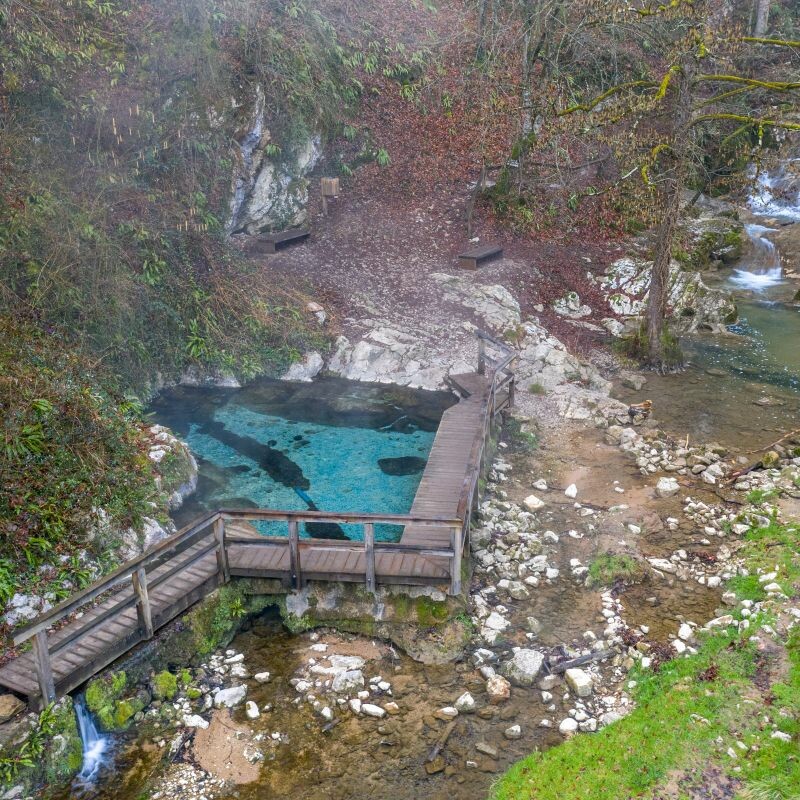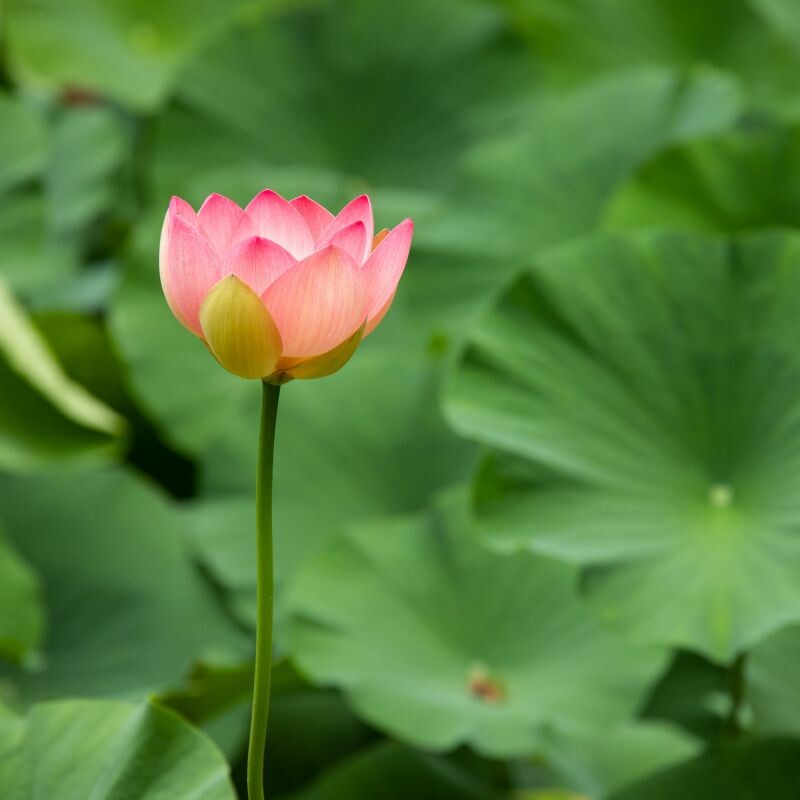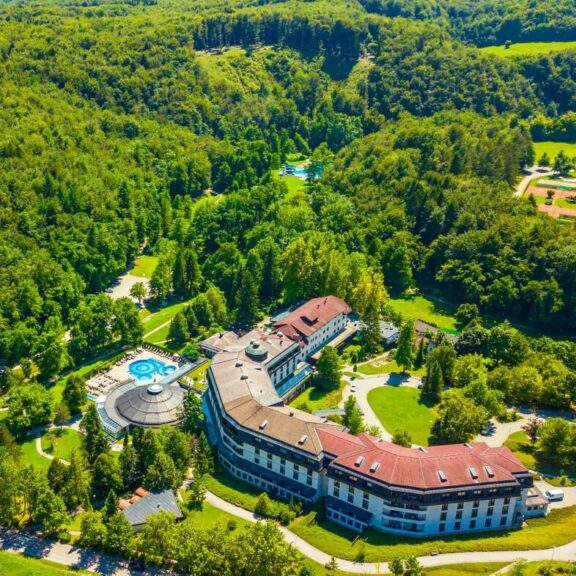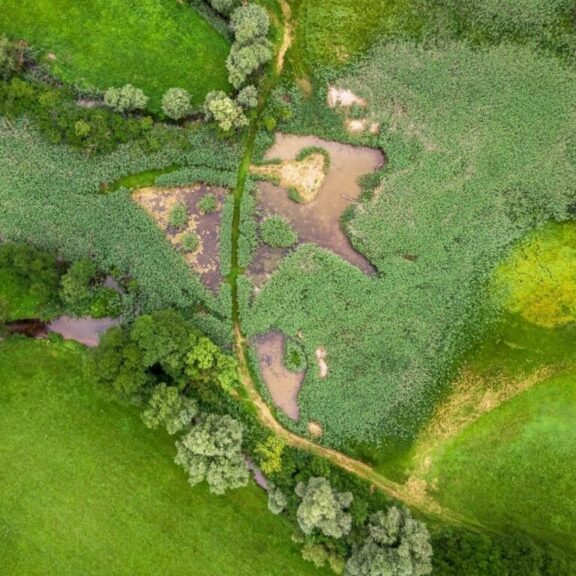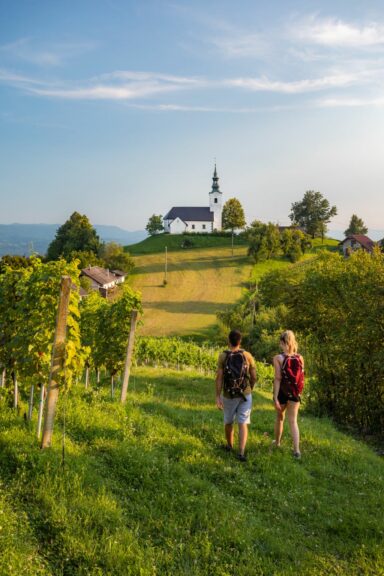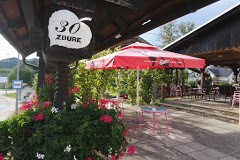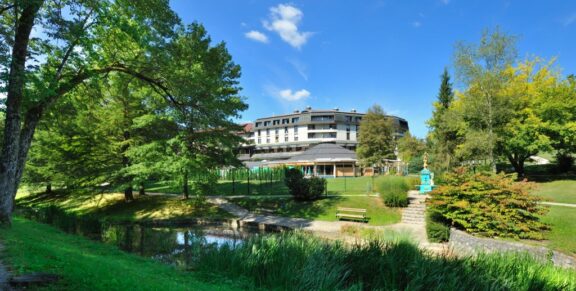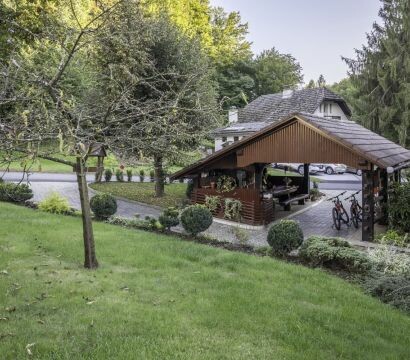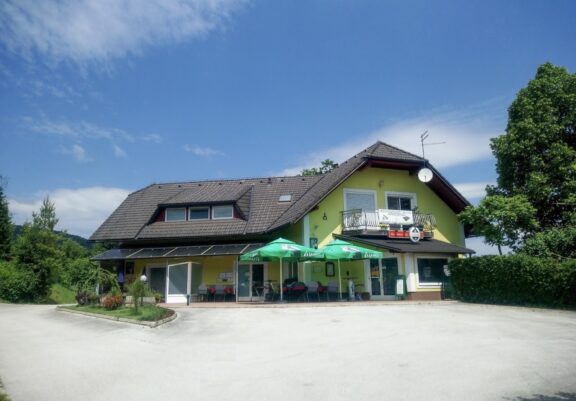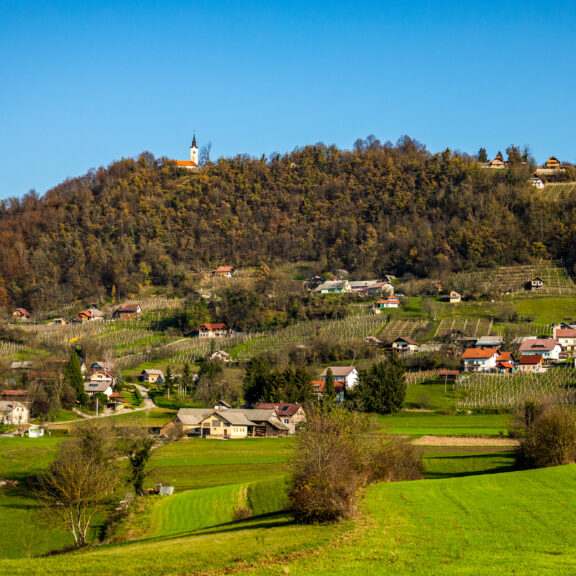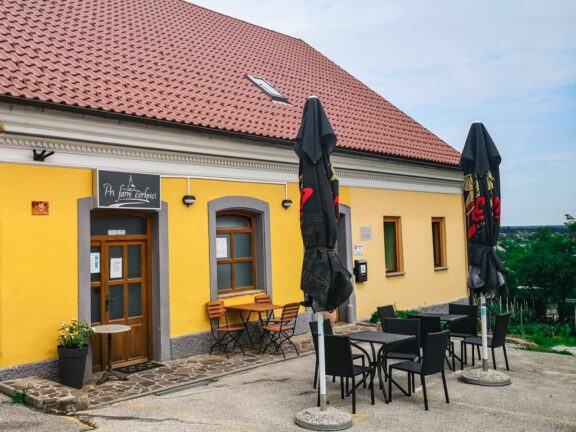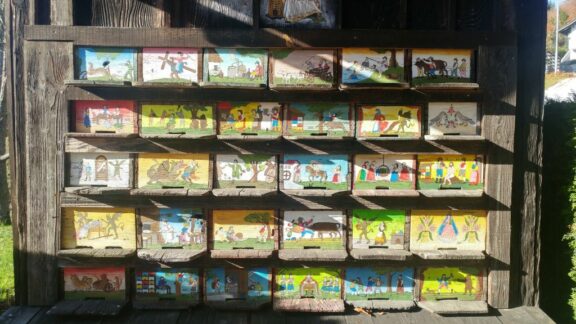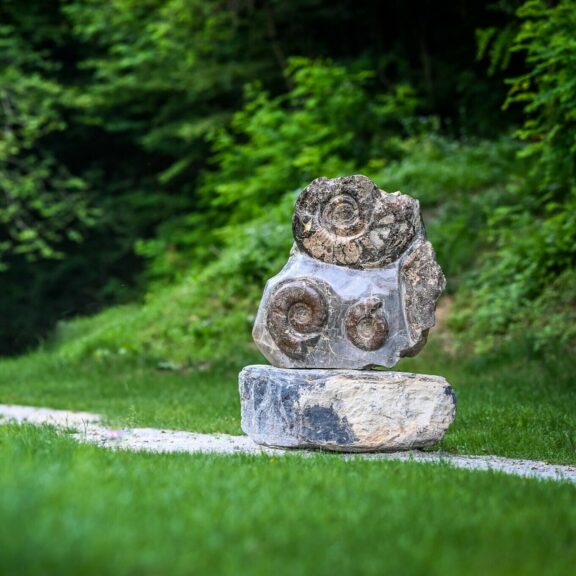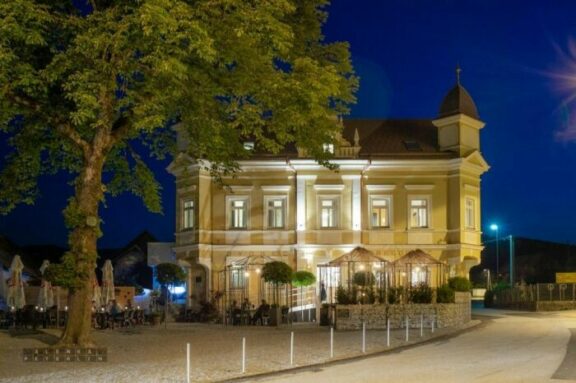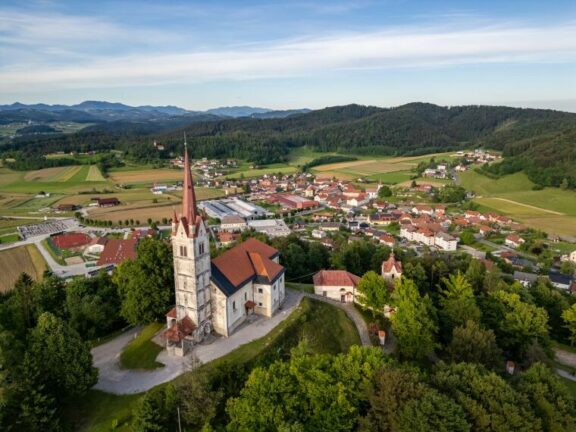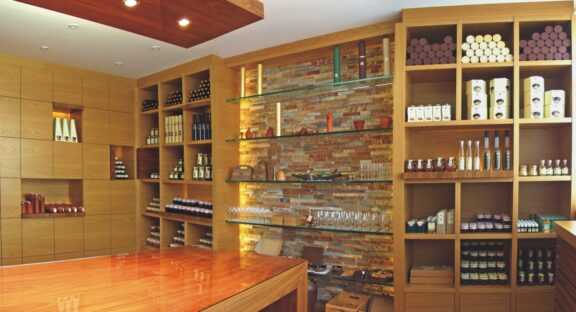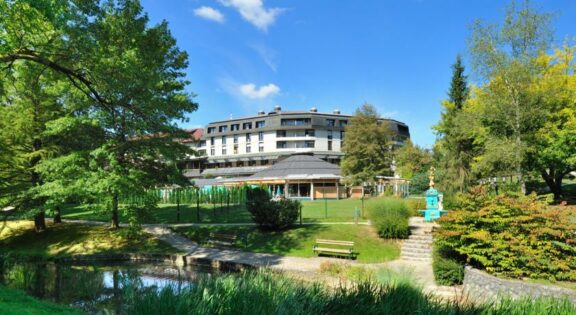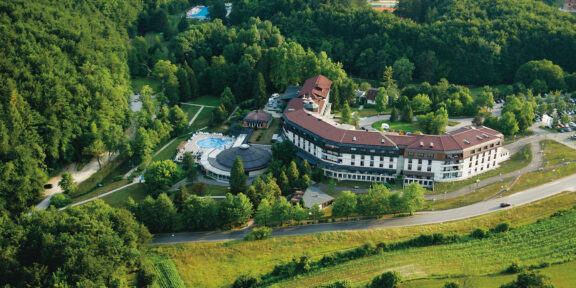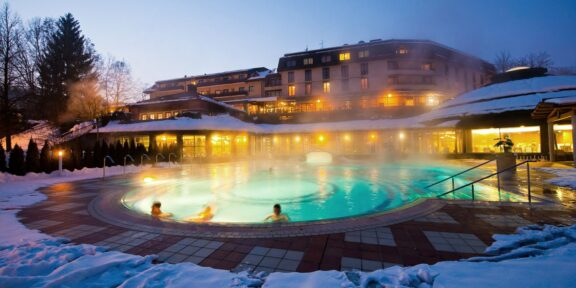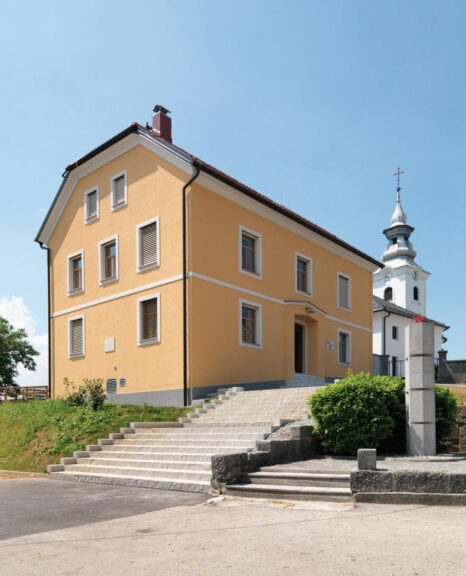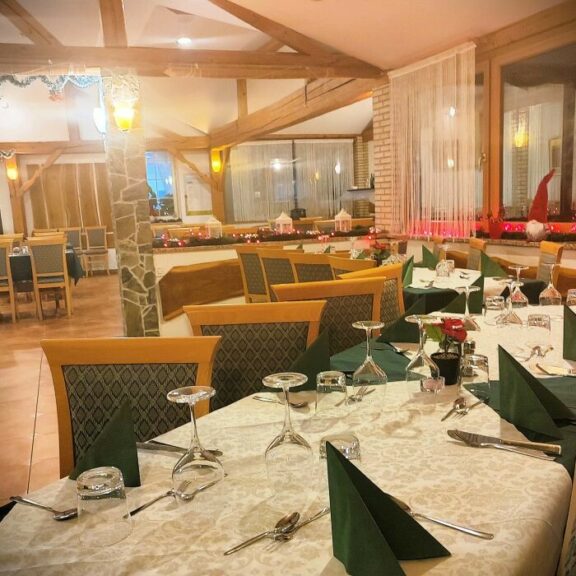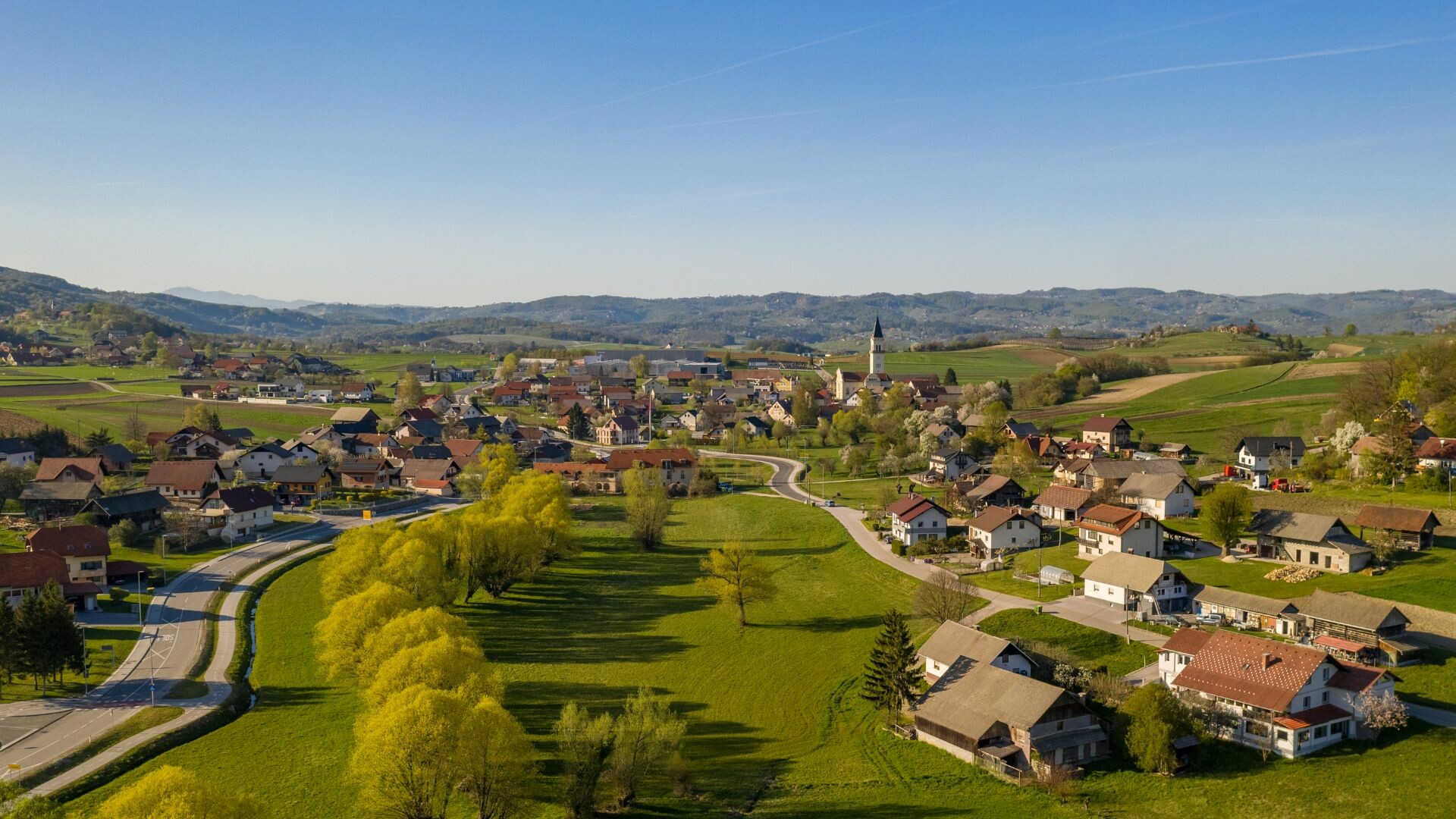In the center of the spa park in Šmarješke Toplice, along the botanical path, there is a small lake fed by a hot spring, where an extremely rare plant species – the Indian lotus – has been growing for years. In summer, the surface of the lake is dense with large waxy leaves, while above the water, hundreds of delicate pink flowers bloom. Natural habitats of this lotus are now rare only in some parts of Asia and Australia. The notion that the Indian lotus cannot survive winter here prevailed for a long time, making its presence in Šmarješke Toplice even more exceptional.
The Church of St. Mary in Šmarjeta
The Church of St. Mary in Šmarjeta was built between 1909 and 1928, replacing an older medieval church. Its architecture reflects the time of its construction, while the interior furnishings are the work of renowned Slovenian artists. The church houses a magnificent painting of the Crucifixion from the 17th century, transferred from the Church of Our Lady of Mount Carmel in Slapi. It is surrounded by a stone wall that once marked the boundaries of the parish cemetery, abandoned in 1948. On the facade, there is a memorial plaque to those who fell in World War I, unique in the Dolenjska region.
View from the church tower
From the top of the bell tower, reached by 126 steps, spreads a magnificent view.

